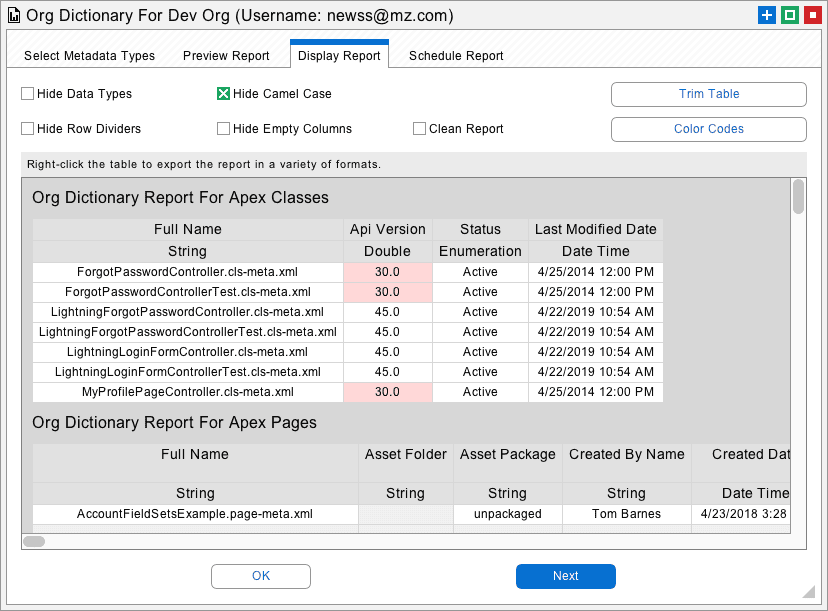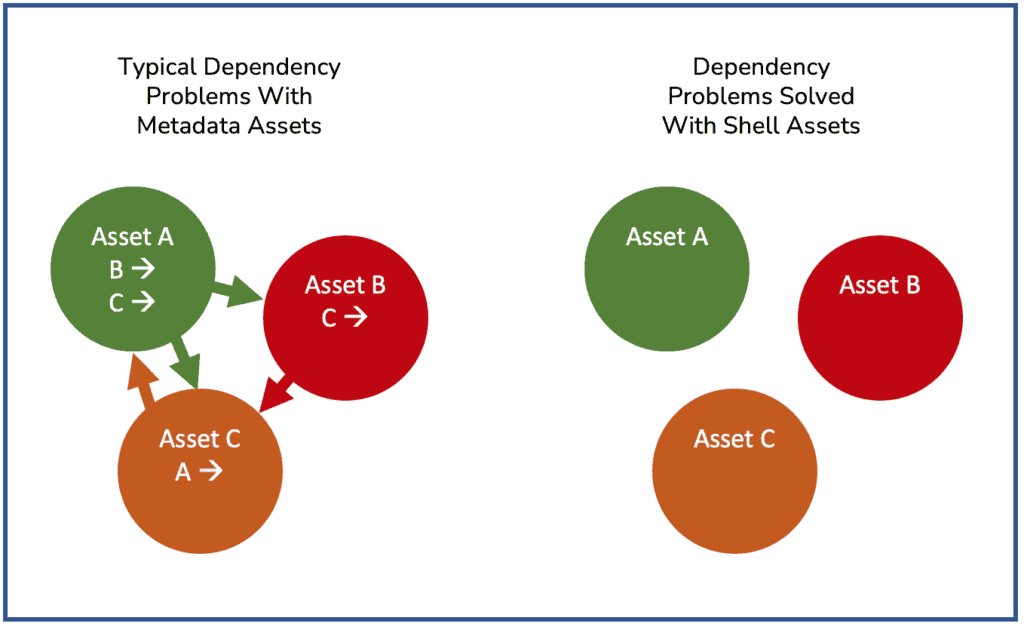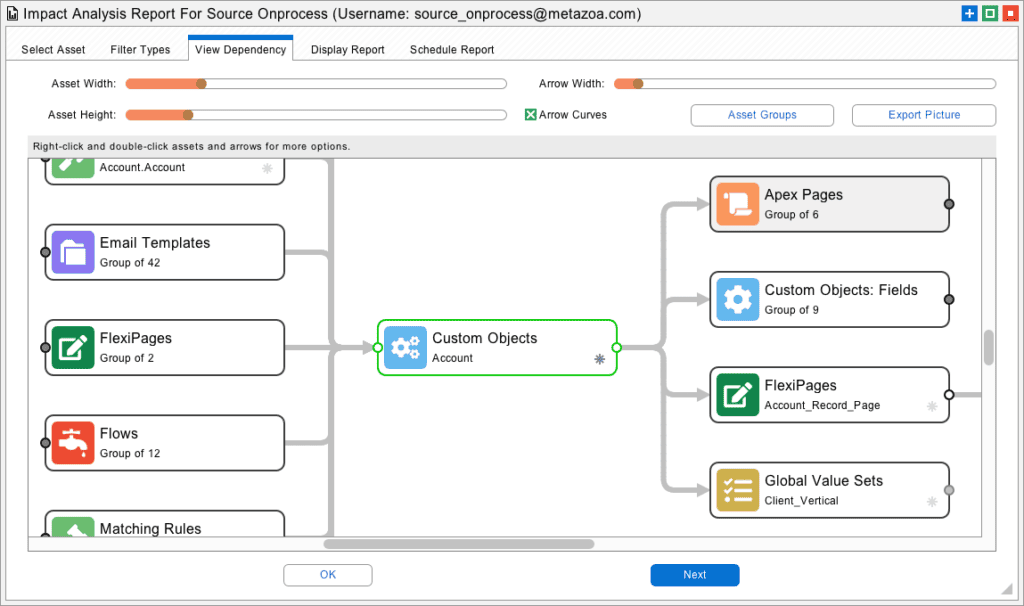Introduction
Metazoa has a long history of technological innovation on the Salesforce platform. We were early adopters of the Data API in 2003, and then the Metadata API a few years later. Our team built the first AppExchange application in 2005, the first release management application in 2006, and the first data migration application in 2007. Our track record of innovation continues today with our Metazoa Snapshot product focused on the org management space. This whitepaper outlines some of our recent product innovations and details our technology roadmap moving forward.
API Virtualization
Our Snapshot product makes heavy use of the Data, Metadata, and Tooling APIs. We started using these APIs in parallel over a decade ago. But the Salesforce API stack has many inconsistencies and special cases that hamper application development. We have written whitepapers about the special cases that complicate use of the Metadata API. Out of the 220 metadata asset types, almost half of them require special handling. Another issue is the lack of consistency in different Salesforce API channels. Cross-referencing information returned by these channels reveals hundreds of inconsistencies and documentation errors. But perhaps the biggest problem is simply the lack of available information on fundamental org characteristics. What is the correct schema for each metadata type? Which schema elements refer to other dependent assets? What are the global characteristics of the org?

To answer questions like this, Metazoa has created a Virtual API Stack built on top of the Salesforce Data, Metadata, and Tooling APIs. We have spent years researching metadata schema and asset dependencies, and this information is used to augment our API Stack. This strategy has allowed us to handle all the special cases and other flaws at the virtualization layer instead of dealing with these issues throughout the application interface. The result is that we have been able to solve long-standing problems in the org management space. Two of these recently developed solutions are discussed next.
Asset Schema for Org Dictionary
The Metazoa API stack has allowed us to build reports that are otherwise impossible to create. A great example of this is the Snapshot Org Dictionary report. This report covers all 220 metadata types with a single easy to use reporting interface. Not sure what your Workflows do? Build a report that details every alert, update, message, rule, and task. Sharing Rules? Flows? FlexiPages? Every metadata type can be beautifully illustrated and color-coded in minutes. This report is in heavy use by financial institutions and healthcare providers for documentation and compliance. Administrators also use this report to gain a comprehensive understanding of complex metadata types in their org.

Asset Dependencies for Impact Analysis
Another innovative use of the Metazoa API Stack can be found in our Impact Analysis report. This application leverages years of research about metadata dependencies. You can browse across all 220 different metadata types and follow links on all 1240 possible dependencies that can connect them. This degree of coverage is orders of magnitude more complete than the native Salesforce dependency API. We have written whitepapers about the difficulty of using the Salesforce dependency API for technical debt reduction. The Snapshot Impact Analysis report is key for understanding the structure of an org or for evaluating planned changes. Access to complete and accurate dependency information is also vital for org splits and merges. This is discussed in the next section.
Org Splits & Merges
The most daunting technical problem on the Salesforce platform is dealing with metadata dependencies during deployment. All the different metadata assets are dependent on each other, and you must select the right set of assets for any deployment to work. The metadata dependency problem is why applications like Change Sets and DevOps Center are hard to use and often fail to achieve the desired results.
The metadata dependency problem becomes even more severe when org splits and merges are attempted. In that situation, an administrator or developer must move millions of entangled assets from one org to another. Searching for the right combination of metadata assets in each deployment is like trying to untangle a giant ball of yarn. Untangling all the dependencies becomes exponentially more difficult as org size increases.

The Metazoa Virtual API Stack solves the dependency problem. Our research into metadata schema allows us to remove the dependencies from any metadata asset. These Shell Assets can be deployed anywhere because they are independent. This populates the destination namespace in phase one and allows the deployment of real assets in phase two. There are still occasional deployment issues, but these can be handled one at a time without dependency constraints. Shell Assets are a breakthrough technology for org splits and merges. They can be used to simplify any complex deployment task. We have written whitepapers about Snapshot’s unique administrative deployment capabilities.
Global Org Health Statistics
An interesting side effect of the Metazoa Virtual API Stack is that we can generate global statistics that can be used to characterize any org. We can count the number of assets and the interconnected dependencies between them. These statistics are useful for understanding org complexity and logical size. The Snapshot Technical Debt reports provide information on the number of assets that are candidates for deprecation. The Snapshot Best Practices report provides information on org configuration problems. Taken together, these statistics can be used to calculate a numerical score for org health. This statistic can be calculated over time to show improvements in org management and the results of remediation efforts. Numerical ranking can be used to detect orgs in need of help. The next section discusses that issue.

Automated and Repeatable Processes
Metazoa is chipping away at long standing org management problems in dire need of automated solutions. Examples of this include technical debt reduction, transition to Lightning, optimization and cleanup, and org splits and merges. Currently, professional services companies employ legions of developers to work on these problems. This approach is slow, expensive, inconsistent, and error prone. In many of these service engagements, large teams must be given administrative credentials to work on the org, and this brings up security concerns as well.
Metazoa is making rapid progress automating org management transformations. We currently offer 15 repeatable automated professional services solutions that address every aspect of technical debt reduction. Providing automated and repeatable solutions drastically reduces cost, increases quality, and provides faster results than alternative methods.
The next phase for Metazoa is the ability to analyze any org and provide comprehensive recommendations for effective org management based on best practices. An administrator or developer can pick the desired solutions and click a button to complete the org transformation. Our new Solution Centers on the AppExchange are a great first step in the direction of automating org management on the Salesforce platform:
- Org Security Center – Profile & Permission Set Management
- Documentation Center – Compliance Documentation with Data Dictionary
- Technical Debt Center – Org Cleanup and Optimization with Impact Analysis
Conclusion
Metazoa has been working for over a decade on technical debt reduction, org documentation, and org security. These are related concerns, and most of the features we support have come from thousands of helpful suggestions made by our enterprise customers over many years. Check out our battle-tested product line on the AppExchange. If you are a power user, our Snapshot product delivers all of these capabilities under one roof with a visual interface.


 Congratulations!
Congratulations! 